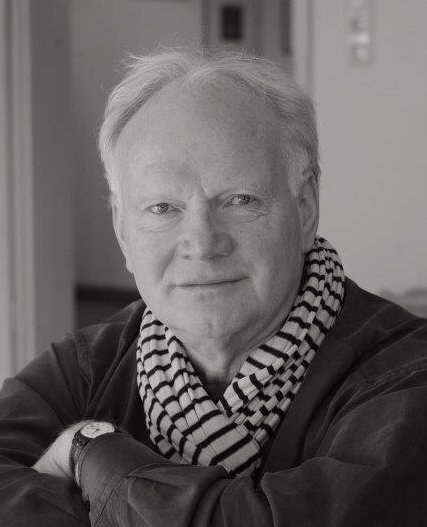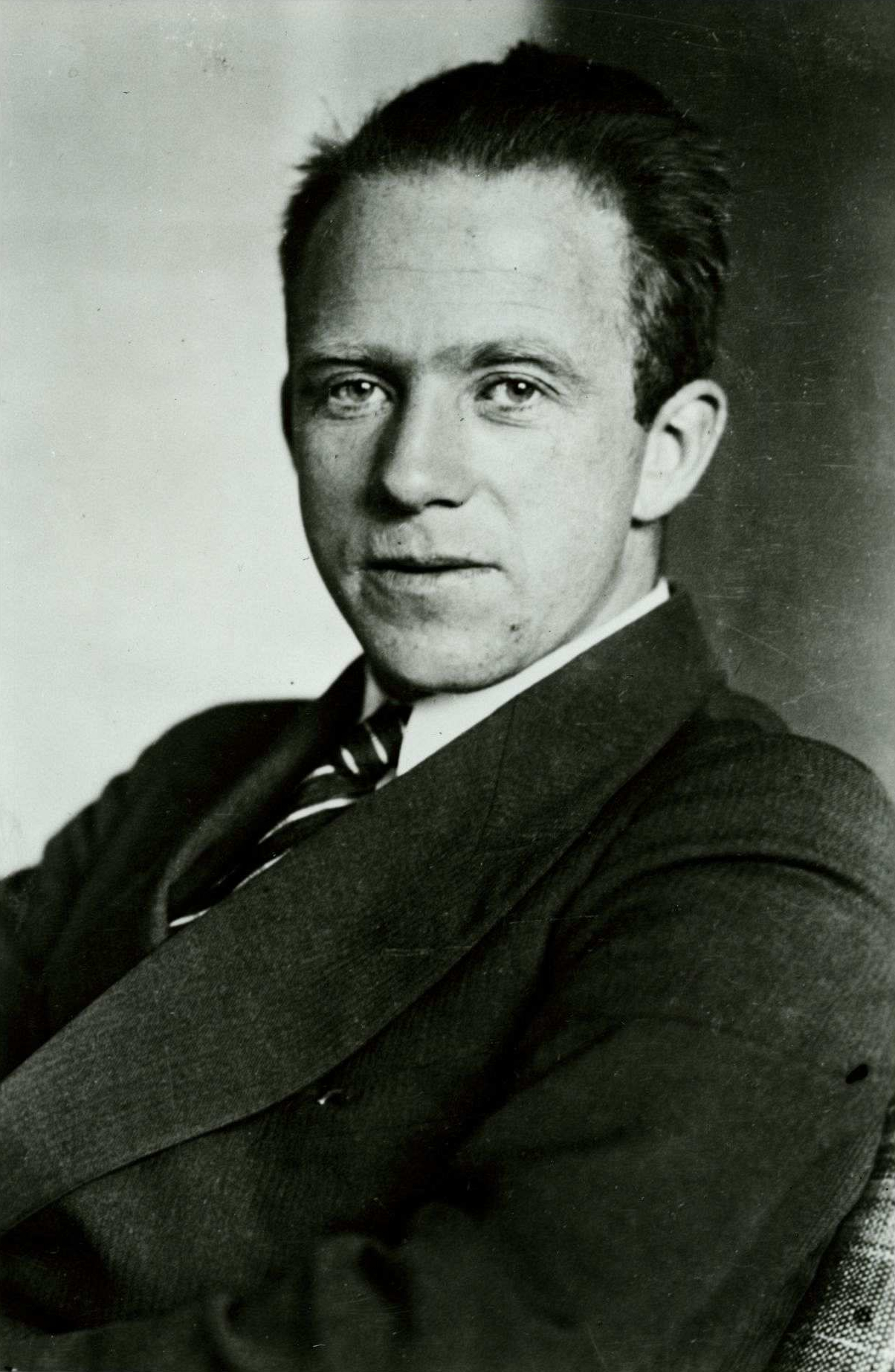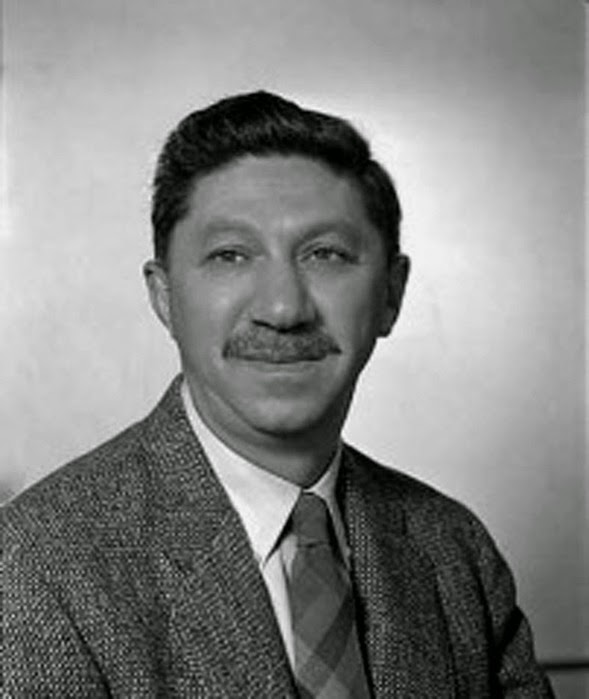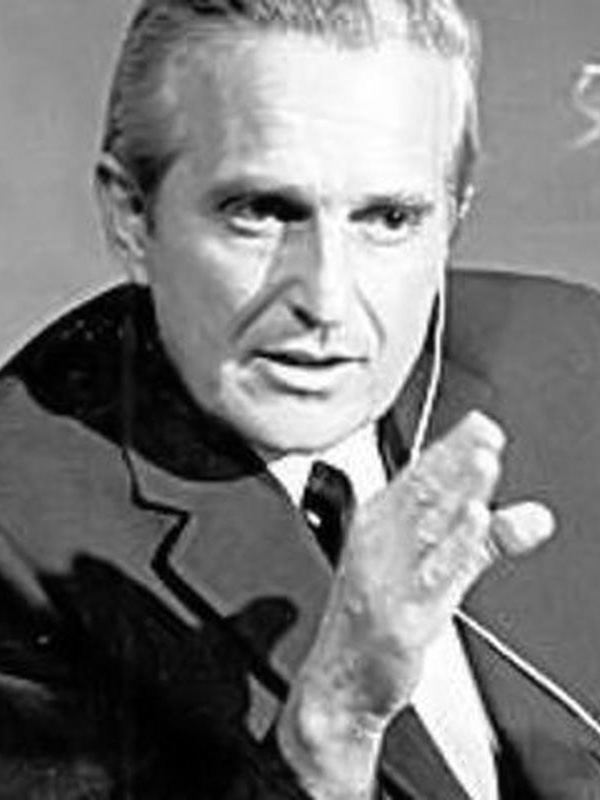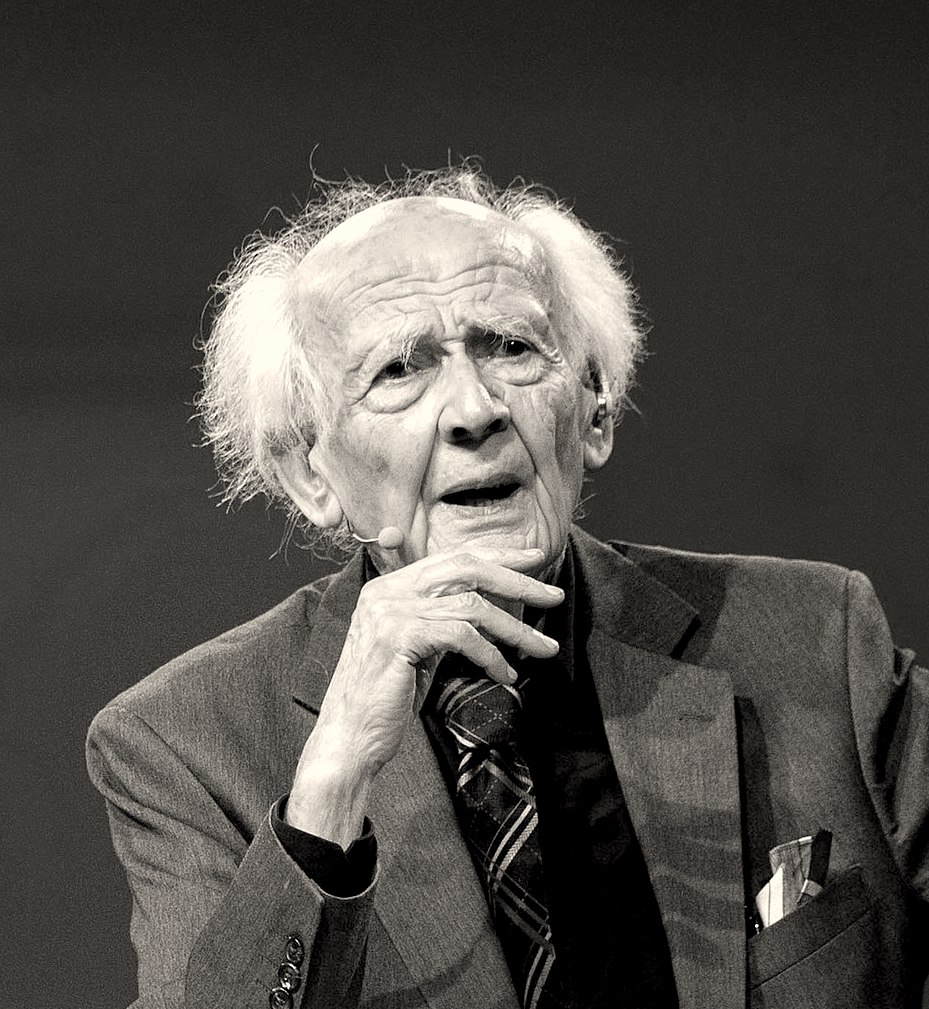N-keywords
Contents
Federation through Keywords
(Ulrich Beck, The Risk Society and Beyond, 2000)
Imagine us in “the risk society”—impregnated with existential risks we don’t know how to handle; we shall not move beyond the risk society—as long as we look at those problems through the same concepts we used when we created them.
The first and most important thing you want to know about these keywords is that they are custom-defined ways of looking or technically scopes; when I turn for instance culture into a keyword—I am not defining what culture "really is"; but giving you a way to look at the infinitely complex real thing; and producing a sort of a projection plane, to greatly simplify the matter. The point is that we can only see things whole if we look at them from all sides; and that if we can discover a way of looking that shows the thing as not whole—then the thing is not whole even when by "normal" way of looking it does look perfectly fine.
Keywords elevate us 'on the shoulders of giants' so we may see further.
As custom-defined words, keywordsenable us to think and speak in new ways. By creating keywords we can give old words such as “science” and “religion” a distinct function and a new life; keyword creation is a means to linguistic and institutional recycling.
When adopted from the terminology of an academic field, cultural tradition or frontier thinker, keywords enable us to account for what’s been seen, experienced or comprehended; to ‘stand on the shoulders of giants’ and see further; to see things in new ways and see them whole.
Paradigm
I use the word paradigm informally—to point to a general societal and cultural order of things; where everything depends on everything else; and also more formally as Thomas Kuhn did—to point to a (1) different way to conceive of a certain domain of interest, which (2) resolves the reported anomalies and (3) opens up a new frontier for research and development.

The Liberation book begins with the iconic image of Galilei in house arrest whispering "And yet it moves!"; and develops an analogy—between that historical moment when a sweeping paradigm shift was about to happen (from the Middle Ages and tradition, to the Enlightenment and Modernity) and our own time; where the paradigm is again ready to shift; because the reported anomalies demand that it does; and because we already own the information that comprehensive change requires.
It remains to 'connect the dots'.
Logos
(René Descartes, Meditations on First Philosophy, 1641)
The reason why we must do as Descartes did—and "demolish everything completely and start again right from the foundations"—is that he and his Enlightenment comrades got it all wrong!
"In the beginning was logos and logos was with God and the logos was God." I use logos as keyword to point to this reconstruction because it helps us comprehend what exactly went wrong and why. To the philosophers of antiquity, "logos" was the principle according to which God structured the world; which enables us humans to comprehend the world and dance with it harmoniously. How and why this is at all possible—here the opinions differed; and gave rise to a wealth of stream of thought and cultural directions. But "logos" did rather poorly from then on; it did not translate well into Latin; and during the Middle Ages it was believed that logos was revealed to us humans through God's own son; and so was all further quest of logos forgotten or even forbidden.
Descartes and his colleagues revived it—but conceived it as the quest for "objective" and unchanging truth; which is, they took this for granted, revealed to the mind as the sensation of absolute certainty. You'll now easily comprehend how from that point on everything went wrong: Instead of conscientiously looking at things from all sides in order to see them whole—we ended up getting stuck with whatever way of looking at things there was that gave the mind that comforting sensation; and we ignored whatever might threaten it!
Seduced by reductionistic comprehension—we failed to even notice when knowledge became impossible.</h3>
In the Liberation book this is made transparent already in Chapter Two; where I tell the thread (short sequence of vignettes) where Nietzsche first portrays us modern humans (at the turn of the twentieth century!) as (already!) overwhelmed by "the abundance of disparate impressions" and "the tempo of [their] influx"; so that we "instinctively resists taking in anything, taking anything deeply"; and "unlearn spontaneous action [and] merely react to stimuli from outside". How do we cope with the overabundance of data (made to stimulate and not help us comprehend) on one side, and the staggering complexity of our world on the other, I asked; and let Anthony Giddens give an answer: “The threat of personal meaninglessness is ordinarily held at bay because routinised activities, in combination with basic trust, sustain ontological security. Potentially disturbing existential questions are defused by the controlled nature of day-to-day activities within internally referential systems." Are you beginning to see how materialism<b>—our modernity's present <b>paradigm</b>—naturally emerged from this foundation? In the book I summed this up by adapting (Johan Huizinga's) <b>homo ludens</b> as <b>keyword</b>; and calling it a 'cultural species, which (unlike the cultural <b>homo sapiens</b> who seeks <b> knowledge</b> to choose directions) simply learns 'the rules of the game' of one's profession and other society's <b>systems</b>; and performs in them competitively, aiming to further (what he perceives as) his own interests.</p>
</div>
</div>
Design epistemology
</div>
“[T]he nineteenth century developed an extremely rigid frame for natural science which formed not only science but also the general outlook of great masses of people."
(Werner Heisenberg, Physics and Philosophy, 1958.)
<p>Another reason why we must do as Descartes did—while thinking in a different way than he did—is that the assumptions he and his colleagues made, about the mind and> about the world, have been proven wrong and disowned by science! I show this too in Chapter Two, by quoting Heisenberg. Long story short—first the prospects of ever completing a description of the (presumed) mechanism of nature (which science appeared to promise in Newton's time and deliver in Darwin's time) retreated whenever scientists appeared to come close; the atom split into one hundred "subatomic particles"; which—when scientists became able to examine them—defined the assumptions based on which science was created, and even our very common sense (as Robert Oppenheimer pointed out in Uncommon Sense. </p>
<p>In Chapter Nine I show how an up-to-date foundation for truth and meaning can be created; which I called <b>design epistemology</b>. Long story short, the idea is to use <b>truth by convention</b> and (instead of simply assuming them) first <b>federate</b> and spell out the fundamental premises on which creation of truth and meaning is to be based; by turning what the <b>giants</b> said into conventions. And adding a purpose.</p>
<p><b>Design epistemology</b> takes the constructivist credo (that we construct interpretations of natural phenomena, and do not discover objectively existing "laws" by which the nature operates) a single significant step further—and instead of stating it as fact about reality, turn it into a convention. </p>
<h3>Design epistemology expresses in words what the Modernity ideogram expresses visually—that Information is a human-made thing for human purposes; which needs to be suited to its function in systems—so that they can function and be sustainable or whole.</h3>
<p><b>Design epistemology</b> is the third and bottom-level of <b>holotopia</b>'s <b> five insights</b>. It's the root from which it all springs up.</p>
<p></p>
Polyscopic methodology
</div>
</div>
“I suppose it is tempting, if the only tool you have is a hammer, to treat everything as if it were a nail.”
(Abraham Maslow, Psychology of Science, 1966)
<p>Step Two is to create a way to knowledge—i.e. a <b>methodology</b>; by applying <b>logos</b> to method. Function of "scientific method"—works in general. Prototype:
<b>polyscopic methodology</b> as general-purpose "scientific method". </p>
<p>Ability to exercise the key powerful function of academia—tell us the people what should information be like (I use this keyword to denote both the physical artifacts and the way how they are created and used). The ability to shift paradigms is in the hands of publicly sponsored intellectuals (not Donald Trump, not Wall Street bankers)!</p>
<p>In this way responded to Abraham Maslow's general complaint—same as above. And also to his basic direction.</p>
<p>Maslow writes: "I discovered [...] that many scientists disdain what they cannot cope with, what they cannot do well. I remember counterattacking in my irritation with an aphorism I coined for the occasion: 'What isn't worth doing, isn't worth doing well.' Now I think I could add: 'What needs doing, is worth doing even though not very well.'" </p>
<p><b>Polyscopic methodology</b> reverses this anomaly. It is general-purpose; it empowers us to choose subjects based on relevance; and create information as well as we are able. </p>
<p><b>Polyscopic methodology</b> is the fourth of <b>holotopia</b>'s <b>five insights</b>. </p>
<p></p>
Convenience paradox
“The future will either be an inspired product of a great cultural revival, or there will be no future.”
(Aurelio Peccei, One Hundred Pages for the Future, 1981)
<p>The fifth insight. Holotopia is the joining line.</p>
<p>How to put together core insights and correct ethics. AND to create a system.</p>
<p>Implemented as a way to federate Buddhadasa—Thailand's holy man and Buddhism reformer; who modernized it completely. By turning it into an experimental / verifiable fact. </p>
<p>In book appears in two chapters—five and six; completing the view of inner wholeness and starting the view of outer or systemic or societal wholeness. </p>
<p>Ch5 is a reversal of "purs of happiness"; by showing that paticcasamuppada is really .</p>
<p> Ch6 is sum of religions.</p>
<p>For dialog: We got it all wrong! WRONG THINKING—causal, conditioned... And way to correct it—through myth, arts, metaphors, or in a word—> culture! </p>
<p>Traditions used metaphors, rituals etc. to put core memes into culture. We eliminated them by wrong epistemology! There's no turning back—the way out is to CONTINUE the evolution; and create a way to knowledge that houses ALL themes—not the least the pursuit of happiness; so it's no longer </p>
<p></p>
Knowledge federation
“Many years ago, I dreamed that digital technology could greatly augment our collective human capabilities for dealing with complex, urgent problems."
(Doug Engelbart, "Title*, Byte, 1995)
<p>Emanating on the right, the pillar number 2: is to create process and system for <b>information</b>. Putting things together.</p>
<p>That's what <b>knowledge federation</b> is! Process!</p>
<p>Curiosity: New knowledge media have been created for that purpose! By Doug Engelbart and his SRI team. Core of his vision is <b>collective mind</b> revolution. Different division of labor. Exactly what knowledge federation requires. </p>
<p><b>Knowledge federation</b> is the second of <b>holotopia</b>'s <b> five insights</b>.</p>
Systemic innovation
“The task is nothing less than to build a new society and new institutions for it. With technology having become the most powerful change agent in our society, decisive battles will be won or lost by the measure of how seriously we take the challenge of restructuring the ‘joint systems’ of society and technology.”
(Erich Jantsch, Loooong title, MIT Report,1969)
<p>Finally—"the solution to world problems"; what is it? What's the ability we need?</p>
<p>See the systems in which we live and work as gigantic machines; comprising people and technology; DECIDE what the effects of our work will be. HUGE benefits. MUST rebuild them—now turn efforts into problems. </p>
<p>Paradigm, like science—see systems whole.</p>
<p>Jantsch: <b>evolutionary vision</b>. Ilya Prigogine at Berkeley 1972; Five years later got the Nobel Prize for this work. Point is—NOT stability (in classical cybernetics AND in politics and economics); how to keep systems stable. Point is—to make them pliable. Able to change.</p>
<p>That's what we did as <b>knowledge federation</b>—create a prototype and organize a transdiscipline around it. To update it continuously. Restore the severed tie between information and action. Empower systemic change. losely related: We are evolution. Part of it. Use new IT as building material—to ENABLE new ("collectively intelligent" or informed) human systems to emerge; including "democracy" or society.</p>
<p><b>Systemic innovation</b> is the first of <b>holotopia</b>'s <b> five insights</b>.</p>
<p></p>
Power structure
“Modernity did not make people more cruel; it only invented a way in which cruel things could be done by non-cruel people. Under the sign of modernity, evil does not need any more evil people. Rational people, men and women well riveted into the impersonal, adiaphorized network of modern organization, will do perfectly.”
(Zygmunt Bauman Don't know where, 1998?)
<p>See it all as power issue</p>
<p>See politics and power in new—holotopian way; not as "us against them"—but as all of us against power structure!</p>
<p>KEY insight: It's nobody's interest! Never was. But now it's pathetically, HUGELY obvious; success defined by power structure. New way empowerment.</p>
<p>The fifth insight. Holotopia is the joining line.</p>
<p>Point is to see power and politics differently.</p>
<p>POINT IS to see it no longer as "us against them"—but ALL OF US against power structure.</p>
Dialog
“As long as a paradox is treated as a problem, it can never be dissolved.”
(David Bohm, Problem and Paradox, online article,?)
<p>DIALOG is DIA LOGOS through logos.</p>
<p>Re-creating the first step. Same as beginning of academia. Back to basics! But now in a NEW way. Cultural revival begins with correcting an error. And as academic revival.</p>
<p>We exercise THE power we have, as university—to tell people how to use their minds. We made an error. We correct it.</p>
<p>Evolution continues. Power to the people is restored.</p>
</div>
Design epistemology
</div>
(Werner Heisenberg, Physics and Philosophy, 1958.)
<p>Another reason why we must do as Descartes did—while thinking in a different way than he did—is that the assumptions he and his colleagues made, about the mind and> about the world, have been proven wrong and disowned by science! I show this too in Chapter Two, by quoting Heisenberg. Long story short—first the prospects of ever completing a description of the (presumed) mechanism of nature (which science appeared to promise in Newton's time and deliver in Darwin's time) retreated whenever scientists appeared to come close; the atom split into one hundred "subatomic particles"; which—when scientists became able to examine them—defined the assumptions based on which science was created, and even our very common sense (as Robert Oppenheimer pointed out in Uncommon Sense. </p>
<p>In Chapter Nine I show how an up-to-date foundation for truth and meaning can be created; which I called <b>design epistemology</b>. Long story short, the idea is to use <b>truth by convention</b> and (instead of simply assuming them) first <b>federate</b> and spell out the fundamental premises on which creation of truth and meaning is to be based; by turning what the <b>giants</b> said into conventions. And adding a purpose.</p> <p><b>Design epistemology</b> takes the constructivist credo (that we construct interpretations of natural phenomena, and do not discover objectively existing "laws" by which the nature operates) a single significant step further—and instead of stating it as fact about reality, turn it into a convention. </p>
<h3>Design epistemology expresses in words what the Modernity ideogram expresses visually—that Information is a human-made thing for human purposes; which needs to be suited to its function in systems—so that they can function and be sustainable or whole.</h3> <p><b>Design epistemology</b> is the third and bottom-level of <b>holotopia</b>'s <b> five insights</b>. It's the root from which it all springs up.</p> <p></p>
Polyscopic methodology
</div>
</div>
(Abraham Maslow, Psychology of Science, 1966)
<p>Step Two is to create a way to knowledge—i.e. a <b>methodology</b>; by applying <b>logos</b> to method. Function of "scientific method"—works in general. Prototype:
<b>polyscopic methodology</b> as general-purpose "scientific method". </p>
<p>Ability to exercise the key powerful function of academia—tell us the people what should information be like (I use this keyword to denote both the physical artifacts and the way how they are created and used). The ability to shift paradigms is in the hands of publicly sponsored intellectuals (not Donald Trump, not Wall Street bankers)!</p>
<p>In this way responded to Abraham Maslow's general complaint—same as above. And also to his basic direction.</p>
<p>Maslow writes: "I discovered [...] that many scientists disdain what they cannot cope with, what they cannot do well. I remember counterattacking in my irritation with an aphorism I coined for the occasion: 'What isn't worth doing, isn't worth doing well.' Now I think I could add: 'What needs doing, is worth doing even though not very well.'" </p>
<p><b>Polyscopic methodology</b> reverses this anomaly. It is general-purpose; it empowers us to choose subjects based on relevance; and create information as well as we are able. </p>
<p><b>Polyscopic methodology</b> is the fourth of <b>holotopia</b>'s <b>five insights</b>. </p> <p></p>
Convenience paradox
(Aurelio Peccei, One Hundred Pages for the Future, 1981)
<p>The fifth insight. Holotopia is the joining line.</p>
<p>How to put together core insights and correct ethics. AND to create a system.</p> <p>Implemented as a way to federate Buddhadasa—Thailand's holy man and Buddhism reformer; who modernized it completely. By turning it into an experimental / verifiable fact. </p> <p>In book appears in two chapters—five and six; completing the view of inner wholeness and starting the view of outer or systemic or societal wholeness. </p> <p>Ch5 is a reversal of "purs of happiness"; by showing that paticcasamuppada is really .</p>
<p> Ch6 is sum of religions.</p> <p>For dialog: We got it all wrong! WRONG THINKING—causal, conditioned... And way to correct it—through myth, arts, metaphors, or in a word—> culture! </p> <p>Traditions used metaphors, rituals etc. to put core memes into culture. We eliminated them by wrong epistemology! There's no turning back—the way out is to CONTINUE the evolution; and create a way to knowledge that houses ALL themes—not the least the pursuit of happiness; so it's no longer </p> <p></p>
Knowledge federation
(Doug Engelbart, "Title*, Byte, 1995)
<p>That's what <b>knowledge federation</b> is! Process!</p>
<p>Curiosity: New knowledge media have been created for that purpose! By Doug Engelbart and his SRI team. Core of his vision is <b>collective mind</b> revolution. Different division of labor. Exactly what knowledge federation requires. </p>
<p><b>Knowledge federation</b> is the second of <b>holotopia</b>'s <b> five insights</b>.</p>
Systemic innovation
(Erich Jantsch, Loooong title, MIT Report,1969)
<p>See the systems in which we live and work as gigantic machines; comprising people and technology; DECIDE what the effects of our work will be. HUGE benefits. MUST rebuild them—now turn efforts into problems. </p>
<p>Paradigm, like science—see systems whole.</p>
<p>Jantsch: <b>evolutionary vision</b>. Ilya Prigogine at Berkeley 1972; Five years later got the Nobel Prize for this work. Point is—NOT stability (in classical cybernetics AND in politics and economics); how to keep systems stable. Point is—to make them pliable. Able to change.</p>
<p>That's what we did as <b>knowledge federation</b>—create a prototype and organize a transdiscipline around it. To update it continuously. Restore the severed tie between information and action. Empower systemic change. losely related: We are evolution. Part of it. Use new IT as building material—to ENABLE new ("collectively intelligent" or informed) human systems to emerge; including "democracy" or society.</p> <p><b>Systemic innovation</b> is the first of <b>holotopia</b>'s <b> five insights</b>.</p> <p></p>
Power structure
(Zygmunt Bauman Don't know where, 1998?)
<p>See it all as power issue</p>
<p>See politics and power in new—holotopian way; not as "us against them"—but as all of us against power structure!</p>
<p>KEY insight: It's nobody's interest! Never was. But now it's pathetically, HUGELY obvious; success defined by power structure. New way empowerment.</p> <p>The fifth insight. Holotopia is the joining line.</p>
<p>Point is to see power and politics differently.</p>
<p>POINT IS to see it no longer as "us against them"—but ALL OF US against power structure.</p>
Dialog
(David Bohm, Problem and Paradox, online article,?)
<p>DIALOG is DIA LOGOS through logos.</p> <p>Re-creating the first step. Same as beginning of academia. Back to basics! But now in a NEW way. Cultural revival begins with correcting an error. And as academic revival.</p>
<p>We exercise THE power we have, as university—to tell people how to use their minds. We made an error. We correct it.</p> <p>Evolution continues. Power to the people is restored.</p>

